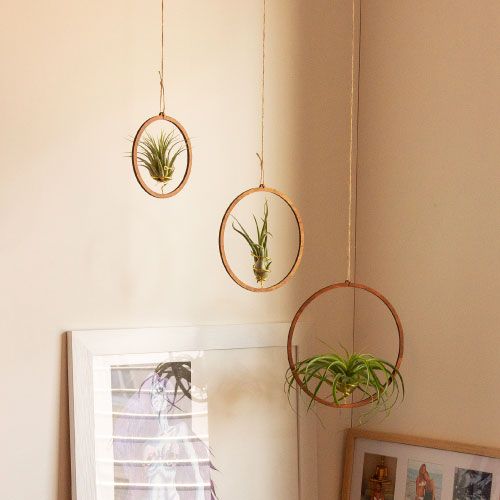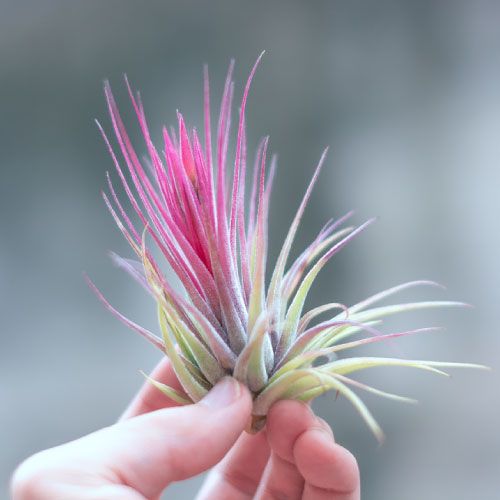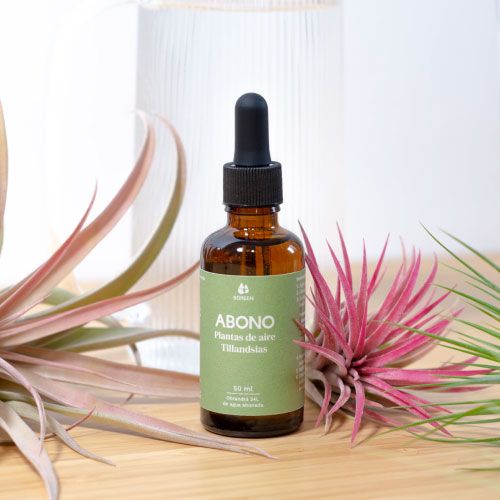How to fertilize an air plant?
When should an air plant be fertilized? There are many fertilizers that you can find in the market and it is not always easy to be clear about which is the most suitable for your air plant. That is why we have thought that writing about them will make your life much easier, for you, who are a lover of these plants and want them to look and be beautiful. Let's get to it!
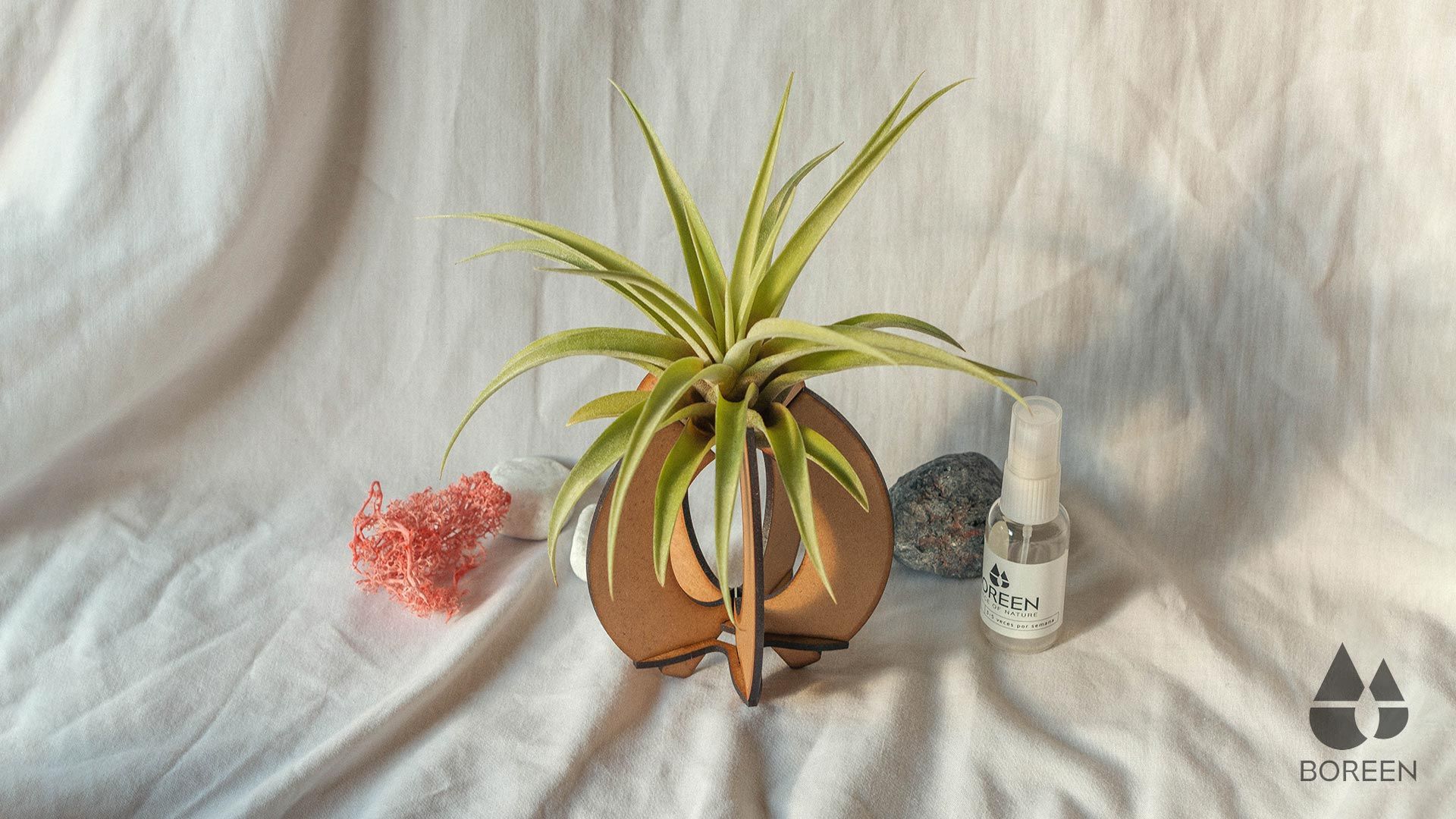
How are air plants fed?
We all know that plants obtain from the soil through their roots, water and organic nutrients of plant or animal origin and that through their leaves they absorb oxygen, hydrogen and carbon with which to carry out the photosynthesis process necessary to feed. In the specific case of air plants, being epiphytic plants, all these nutrients are obtained through their leaves, both water, organic nutrients and also the elements necessary to transform these nutrients into food such as oxygen.
It is possible to see some air plants with roots (even planted in the ground) but you should know that the air plants hardly feed in this way. The roots that you can find in some tillandsias serve as a means of fastening and not as a food channel. In a natural environment, there are drafts, heavy rains that could cause them to fall to the ground and elements that could displace them such as hummingbirds or ants. Therefore, they make use of these small filaments to stay fixed to a surface and avoid falling into the dreaded soil, which would rot it with its moisture.
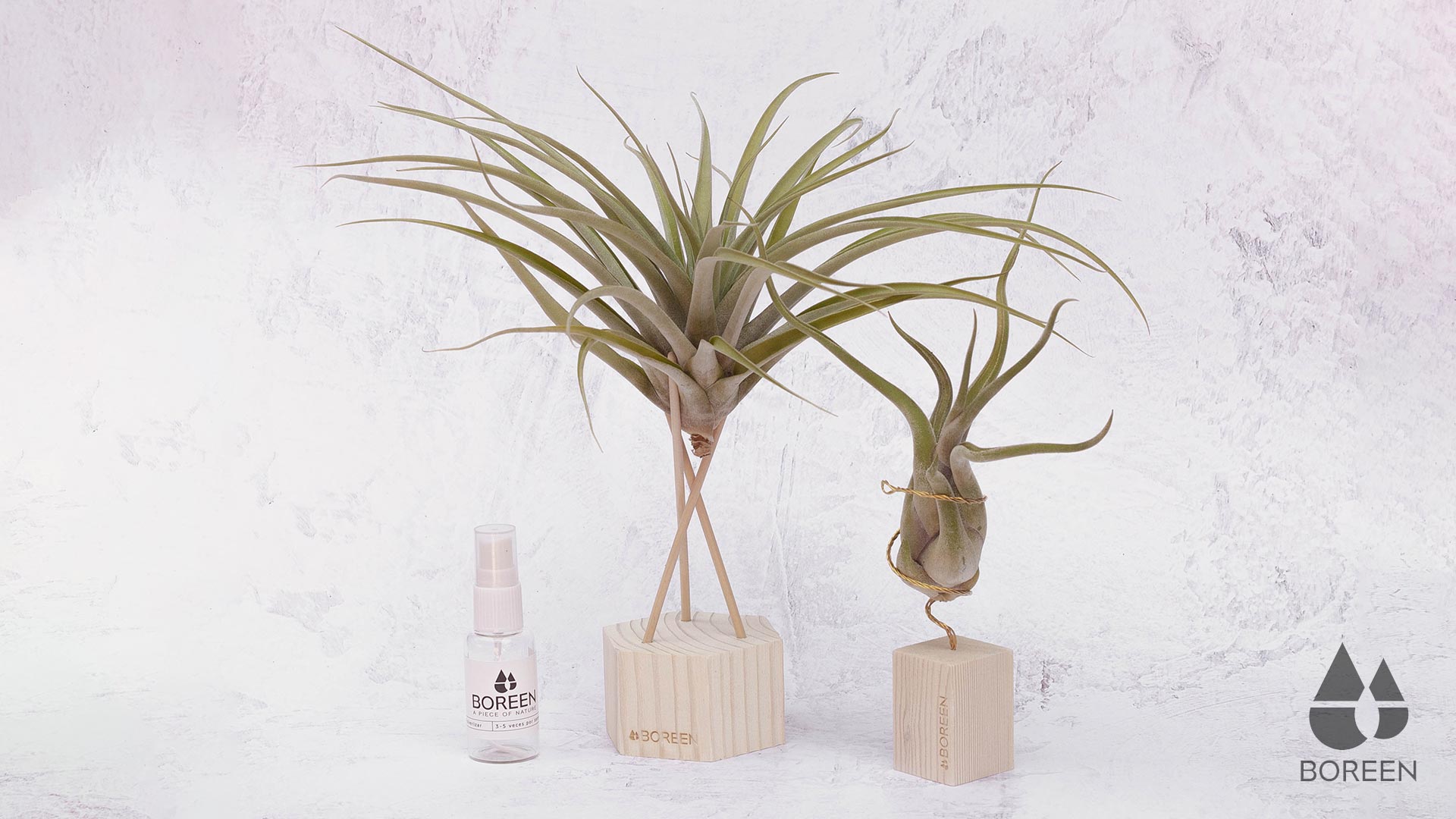
What is foliar fertilizer and application tips in air plants
Foliar fertilizer is a fertilizer that is applied directly to the leaves and stems. This type of fertilizer is suitable for air plants and is the opposite of root or soil fertilizer, which are those fertilizers that are applied directly to the earth and that would not serve to nourish our tillandsias.
The foliar fertilizer nourishes the air plants in a 3-step process in which the nutrients are transformed in a fast and effective way so you will soon see the results if you apply this type of fertilizer in your air carnations. To apply it on the air plant, you just have to dilute it in water and spray its leaves. Of course, it is advisable to read the product specifications indicated on the label of the foliar fertilizer you have purchased.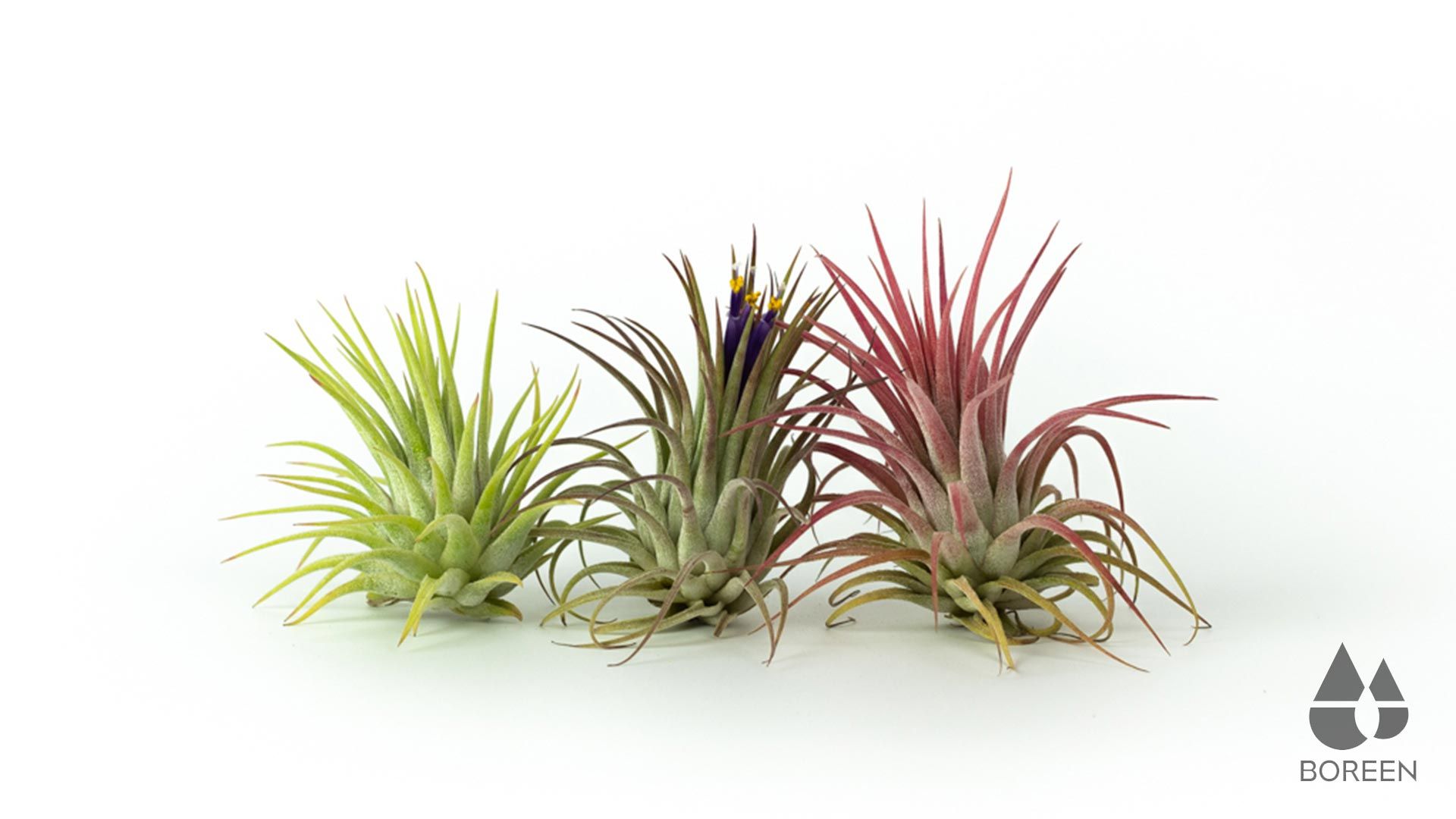 When applying this type of fertilizer on the plant, follow these tips to avoid problems and achieve better results:
When applying this type of fertilizer on the plant, follow these tips to avoid problems and achieve better results:
- Avoid applying the fertilizer on cloudy or rainy days, since you will lose the potential offered by these fertilizers since the rain "cleans" the leaves and once in the ground, the plant will not have how to absorb the nutrients of the fertilizer.
- Do not expose it to direct light after spraying it. Direct light can harm the tillandsias, if you are also at a time when your leaves are wet it is more likely that the incidence of the sun will damage them. He also thinks that the sun contributes to the fertilizer evaporating before it is absorbed by the tillandsia.
- Dilute the fertilizer in warm water, not lower than 14ºC, for a better absorption of nutrients by the air plant. There is no need to heat it, just avoid cold water.
- Do not water the air plants at night as it affects their photosynthesis process. If you do it occasionally it will not matter but if you do it regularly you will end up harming a process so necessary for plants.
- The coldest months of the year (2 or 3 months of strong cold) it will be enough to fertilize an air plant once a month. In the rest of the months of the year, it can be done every 15 days.
- Be attentive to the needs of your plant. If the plant is in a moment of flowering or growth, specific fertilizers can be applied for these phases of its development or if you prefer you can choose a fertilizer designed for the most general maintenance and that nourishes the plant without attending to a specific circumstance. We will tell you more in depth later in this post.
What is the most suitable fertilizer for air plants?
One of the first questions you ask yourself when we talk about fertilizers is what fertilizer do I need? Let's start from the fact that air plants do not need a fertilizer to grow, develop or have flowers. Often their unusual aesthetics make them look like delicate plants that require a lot of care, but in reality, they are very resistant plants and adapted to a multitude of environments and conditions. But if you decide to fertilize an air plant, they will be delighted and better nourished, it will be easier for them to develop children or you can accelerate the appearance of their incredible and colorful flowers. So although it is not necessary if it is a good practice.
Foliar fertilizers found on the market can be classified into two branches: those created with natural mineral salts and those created with synthetic components, called chelates.
The advantage of the latter over the former is in their rapid absorption so it will give results in a shorter period (an important issue in the air plants since they are slow growing). Chelates also have the particularity of preventing the nutrient from volatilizing since in its composition there is an acid, tetracyclic ethylenediamine acid, whose function is to "stick" nutrients to the leaves to help their absorption.
We do not produce our own fertilizers but we do know those that are better for the tillandsias. In the following list you will find the main characteristics of the best liquid fertilizers that can be used in the periodic care of our tillandsias.
In the list that we indicate below, attention should be paid to a series of important considerations:
- The indications of orchid fertilizers are designed for these particular plants and can be used for the fertilization of tillandsias or air carnations but the indications specified on the fertilizer label must always be reduced to 50%.
- The fertilizers of the tillandsias are mainly composed of Nitrogen, Phosphorus and Potassium. The variation and combination of these 3 elements are what will create fertilizers designed to meet the needs of air plants at specific times. We explain how to know how to distinguish them. On the labels appear the symbols NPK: the N refers to Nitrogen, the K to Potassium and the P to Phosphorus. The higher the value of nitrogen (N), with respect to the rest of the elements, the more thoughtful its composition is for the growth phase. On the other hand, if the elements P and K are the highest in the composition of the fertilizer, we are facing fertilizers designed for flowering. The third combinable option is to find products whose composition is the same for all elements. In that case, that fertilizer is suitable for the normal maintenance of tillandsia and is not specially designed for its development but for its sustenance.
It is possible that in addition to these elements, fertilizers contain another series of nutrients such as vitamins, natural salts or acids, all of them designed to help the plant in its growth and development.
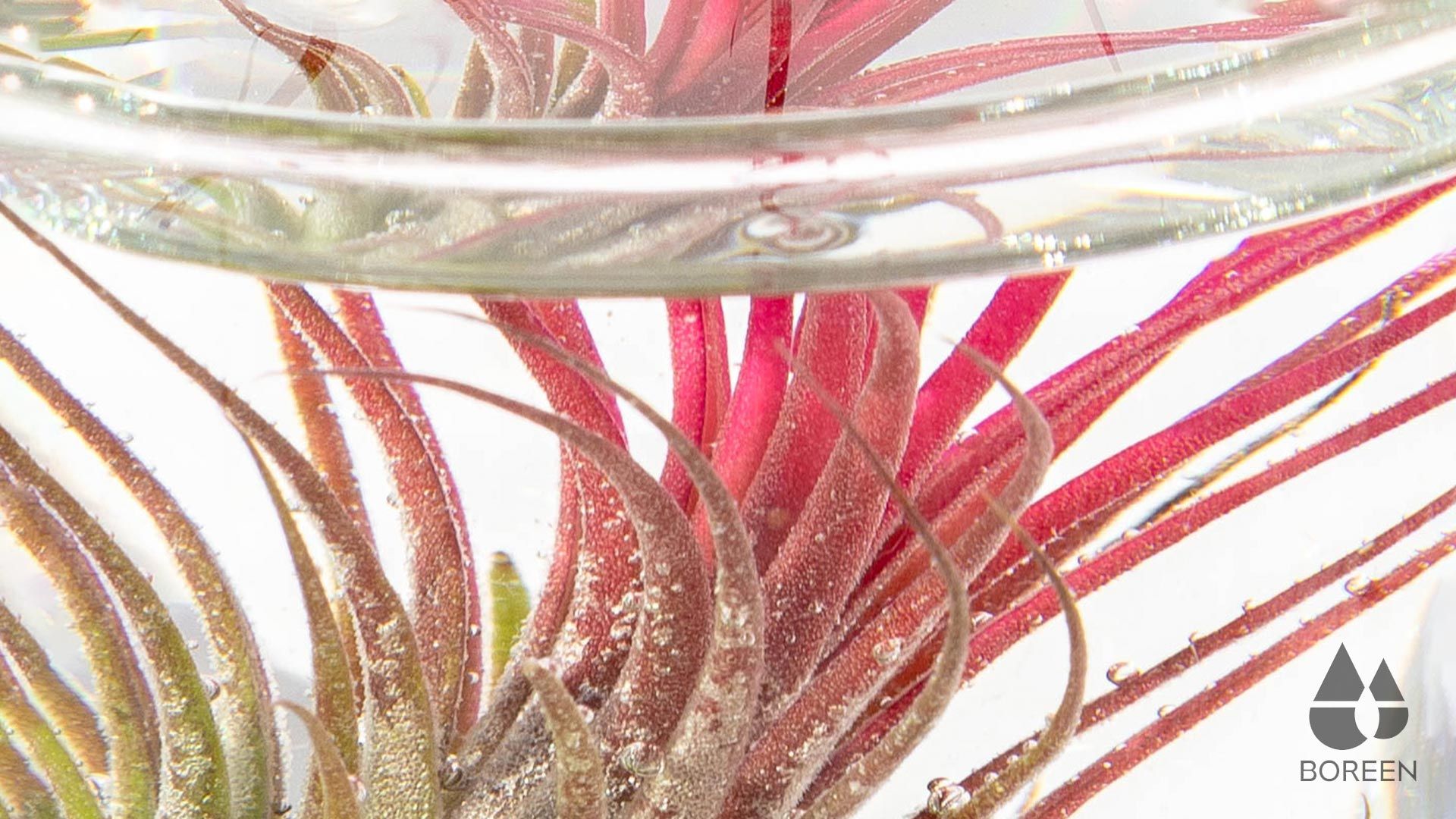
The best fertilizers for air plants
1 Concentrated fertilizer for Orchids: Orchid fertilizers are used for tillandsias since they are fertilizers created for epiphytic plants and both varieties share this characteristic. This particular fertilizer is concentrated and from this small boat you can get up to 125 liters of fertilizer. It is ideal for immersion baths because it allows the plant to be nourished to a better extent. Its dissolution is very simple since the cap acts as a measuring vessel. Its use is designed for the whole year and is undoubtedly one of the best fertilizers for tillandsias if you are in love with air plants and want to give it the best care.
2 Masso Foliar Fertilizer Tillandsias: It is a fertilizer with sprayer ready for use. Its composition has demineralized fertilizer and water. It is a perfect fertilizer to use throughout the year (with less use in the colder months) and suitable for those people who want to give an extra to their tillandsias in a comfortable, fast and uncomplicated way.
3 Foliar Fertilizer for Tillandsias Nutriplant: This is also a foliar fertilizer with sprayer that is already prepared for use and to which you do not have to do anything except shake it before use. It can be used both in flowering and growing periods and the only thing that should be assessed is the frequency of use. If the plant is in a period of rest (when it is cold) using it every 15 days is appropriate. If, on the other hand, the plant is growing or flowering, the ideal is to apply it once a week. Always after having watered or bathed our aerial plants.
4 Organic liquid fertilizer Naukua: Made in Spain with only natural and vegan ingredients that respect the environment. This fertilizer with spray provides the necessary nutrients to the plants stimulating their growth and providing a biostimulant effect. This fertilizer is indicated for orchids so you should always dilute to 50% the indications of the label to apply it on the tillandsias. It is also advisable to use it after bathing, when the leaves of the tillandsia are still wet.
5 Undergreen Organic Liquid Fertilizer: This organic liquid fertilizer to enhance growth and development that provides the necessary nutrients to green leafy plants.

6 Flowers Fertilizer: This fertilizer is especially suitable for the flowering periods of our air plants. This is a complete and balanced fertilizer with low salt content and high vitamin K3 concentrate. Its cap acts as a measuring glass and its use is very simple. It is one of the best-selling fertilizers on Amazon but remember that it is for orchids and therefore we must dilute it to 50% to apply it to our tillandsias.
These are some of the best fertilizers now available on the market and that can help the development of tillandsias, but to achieve a good result it is always necessary to follow the manufacturer's instructions for use and in case of doubt contact before use as we could put the air plant at risk.
Did you find our article on how to fertilize an air plant interesting? Leave us your comment in this same post and so we can know what you liked to continue writing about all those topics related to the tillandsias and their care. If you still have doubts about the subscriptions you can also take the opportunity to write it in this same post.
We can't wait to read you!




